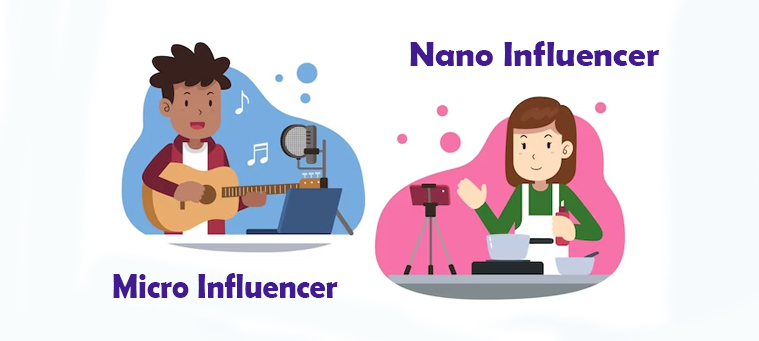Product placement and commercials are two distinct strategies employed by brands and advertisers to promote their products and services. While they share the common goal of increasing brand awareness and influencing consumer behavior, they differ significantly in their approach, execution, and audience perception.

What Is Product Placement?
Product placement, also known as embedded marketing, refers to the intentional inclusion of branded products in various forms of media content, such as movies, TV shows, music videos, and video games. It involves seamlessly integrating the product into the storyline or scene, often to create a natural association between the product and the content.
Mechanism
Product placement is the deliberate incorporation of branded products into media content, to enhance viewer engagement and create positive brand associations. It can take various forms, ranging from subtle visual placements to more prominent integrations where the product plays a crucial role in the storyline.
Types
There are two main types of product placement –
Embedded Marketing: In this approach, the product is integral to the storyline and woven into the narrative in a meaningful way.
Contextual Marketing: This type of product placement aims to enhance the viewer’s experience by incorporating the product into the scene in a contextually relevant manner, without necessarily being a central part of the plot.

Benefits
Product placement offers several advantages for brands –
- By seamlessly blending the product into the content, product placement creates a more natural and organic association with the brand, enhancing viewer engagement and memorability.
- Well-executed product placements can leverage emotional storytelling within the content, fostering deeper connections and building brand loyalty.
- Compared to traditional advertising methods, product placement can be a more cost-effective way to reach target audiences, particularly when the content has a long shelf life or is frequently re-watched.
Levels of Integration
Product placements can be integrated into media content at various levels –
Visual Placement: This involves the visual appearance of the product, such as a brand logo on clothing or a product in the background of a scene (e.g., a sports drink on the sidelines of a football game).
Verbal Mention: Characters may discuss or use the brand, drawing attention to it through dialogue (e.g., a character commenting on the great taste of a particular brand of coffee).
Plot Integration: In this level, the product plays a crucial role in the storyline itself (e.g., a spy using a specific brand of watch with hidden features).
What Is Commercials?
Commercials, also known as advertisements or ads, are traditional forms of advertising that involve creating and broadcasting promotional messages through various media channels, such as television, radio, and online platforms.
Mechanism
A commercial is a structured promotional message designed to capture the audience’s attention, provide information about a product or service, and ultimately influence purchasing decisions. Commercials typically follow a format that includes an attention-grabbing opening, product information, and a call to action.
Types
Commercials can take various forms, including –
Product Commercials: These advertisements focus on promoting a specific product or service, highlighting its features and benefits.
Brand Commercials: Instead of promoting a particular product, brand commercials aim to build and reinforce the overall brand image and values.

Infomercials: These are longer-form commercials that provide in-depth information and demonstrations about a product or service, often employing persuasive techniques and testimonials.
Public Service Announcements (PSAs): PSAs are non-commercial advertisements that raise awareness about important social issues or promote public safety and well-being.
Benefits
Commercials offer several advantages for brands and advertisers –
- Commercials have the potential to reach a wide audience, making them effective for building brand awareness and promoting products or services.
- When aired or displayed, commercials provide immediate visibility for the brand, allowing for rapid dissemination of information and promotions.
- Commercials can leverage various persuasive techniques, such as repetition, testimonials, and emotional appeals, to influence consumer behavior and drive sales.
Key Differences Between Product Placement and Commercials
While both product placement and commercials aim to promote products and build brand awareness, they differ in several key aspects –
Integration vs Interruption
Product placement seamlessly integrates the brand or product into the content, enhancing the viewer’s experience without interrupting the flow of the narrative. On the other hand, commercials are designed to interrupt the viewing experience, often perceived as intrusive by audiences.

Audience Perception
Product placements are often perceived as less overtly promotional, blending into the storyline and creating a more natural association with the brand. In contrast, commercials are recognized as overt advertising, and viewers may be more likely to skip or avoid them.
Cost and Reach
While product placements can be more cost-effective over time, particularly when the content has a long shelf life or is frequently re-watched, commercials can provide immediate, widespread visibility but may be more expensive to produce and air.
Emotional Connection
Product placements leverage the emotional storytelling within the content, fostering deeper connections and building brand loyalty. Commercials, on the other hand, rely more heavily on persuasive techniques and direct promotion of the brand’s features and benefits.
Control vs Context
Commercials: Controlled Message
- Content creators manage every aspect of the message, including script, visuals, music, and overall presentation.
- Commercials focus on directly promoting the brand, highlighting features, benefits, and including clear calls to action.

Product Placement: Contextual Influence
- Brands have less control over the message as it is influenced by the scene and the character’s actions within the content.
- The impact of product placement relies on how naturally the product fits into the scene and how characters interact with it.
- Effective when the product aligns well with the character or story (e.g., a fitness instructor using a specific brand of athletic wear).
- Can backfire if the placement feels forced or inauthentic (e.g., a police officer inexplicably endorsing a brand of fast food).
Effectiveness of Product Placements
The effectiveness of product placements can vary depending on the quality of the placement and the level of viewer engagement with the content. Studies and examples have shown mixed results –
- A study published in the Journal of Advertising Research found that well-integrated product placements can significantly influence brand attitudes and purchase intentions, particularly for products that are relevant to the content or character.
- One of the most successful examples of product placement is the inclusion of Reese’s Pieces in the 1982 film “E.T. the Extra-Terrestrial.” The candy’s sales reportedly increased by 66% after the film’s release.
- In the James Bond film “Casino Royale,” the prominent placement of Ford vehicles, including the Ford Mondeo and Ford Territory, was considered a successful integration that aligned with the brand’s positioning and the film’s action-packed scenes.
Effectiveness of Commercials
Commercials have long been a proven method for increasing brand awareness and influencing consumer behavior when executed effectively. Their effectiveness can be measured through various metrics, such as brand recall, purchase intent, and actual sales data.
- A study by Nielsen found that effective TV commercials can increase brand awareness by up to 33% and drive sales by up to 16%.
- Coca-Cola is renowned for its innovative and memorable commercials, such as the classic “Hilltop” ad from 1971, which helped solidify the brand’s association with happiness and togetherness.
- Apple’s “Think Different” campaign, launched in 1997, is considered one of the most successful and iconic commercial campaigns in history, effectively positioning the brand as innovative and revolutionary.
Current Trends in Product Placement and Commercials
Both product placement and commercials have evolved to adapt to changing consumer preferences and the rise of digital platforms and social media.
Product Placement Trends
Product placements have expanded into social media channels, with brands collaborating with influencers to showcase their products in a more organic and relatable way.
AR technology is being used to create immersive product placement experiences, allowing consumers to visualize products in their real-world environments.

Influencers on platforms like Instagram and YouTube have become effective vehicles for product placements, leveraging their dedicated followings and perceived authenticity to promote brands seamlessly.
Commercial Trends
With the rise of digital media consumption, commercials have expanded beyond traditional TV and radio channels, embracing platforms such as social media, streaming services, and online video platforms.
Similar to product placements, brands are increasingly collaborating with social media influencers to create authentic and engaging commercial content that resonates with their target audiences.
Brands are leveraging search engine optimization (SEO), pay-per-click (PPC) advertising, and native advertising techniques to ensure their commercial messages reach the right audiences at the right time.

With the growing popularity of video content, brands are investing in creating high-quality, engaging commercial videos that can be shared and promoted across various digital platforms.
Volkswagen’s “Force” commercial, aired during the 2011 Super Bowl, effectively utilized humor and storytelling to promote their brand and went viral, garnering over 60 million views on YouTube.
End Note
Product placement and commercials, though distinct, serve as powerful tools for brands. Product placement subtly integrates brands into media, building emotional connections, while commercials deliver direct messages to influence purchase decisions. As consumer habits change, so too do these strategies.
Product placement embraces social media and technology, while commercials thrive in the digital space. Ultimately, the best approach depends on brand goals, target audience, and the product itself. Both methods have value, but thoughtful execution and ethical considerations remain paramount for success.
People Also Ask
Is product placement considered subliminal advertising?
While product placement can be subtle, it is not considered subliminal advertising, which involves embedding messages below the threshold of conscious perception. Product placements are intentionally designed to be noticed, even if they blend seamlessly into the content.
Can product placements negatively impact the credibility of a brand or content?
Yes, if product placements are perceived as excessive, forced, or incongruent with the content or character, they can negatively impact the credibility and authenticity of both the brand and the content. Brands and content creators must strike a balance and ensure that placements enhance the viewer experience without compromising integrity.
Are there regulations governing product placement and commercials?
Yes, most countries have regulations and guidelines in place to ensure transparency and prevent deceptive practices in advertising, including product placements and commercials. For example, in the United States, the Federal Trade Commission (FTC) requires clear disclosure of paid endorsements and sponsored content.

